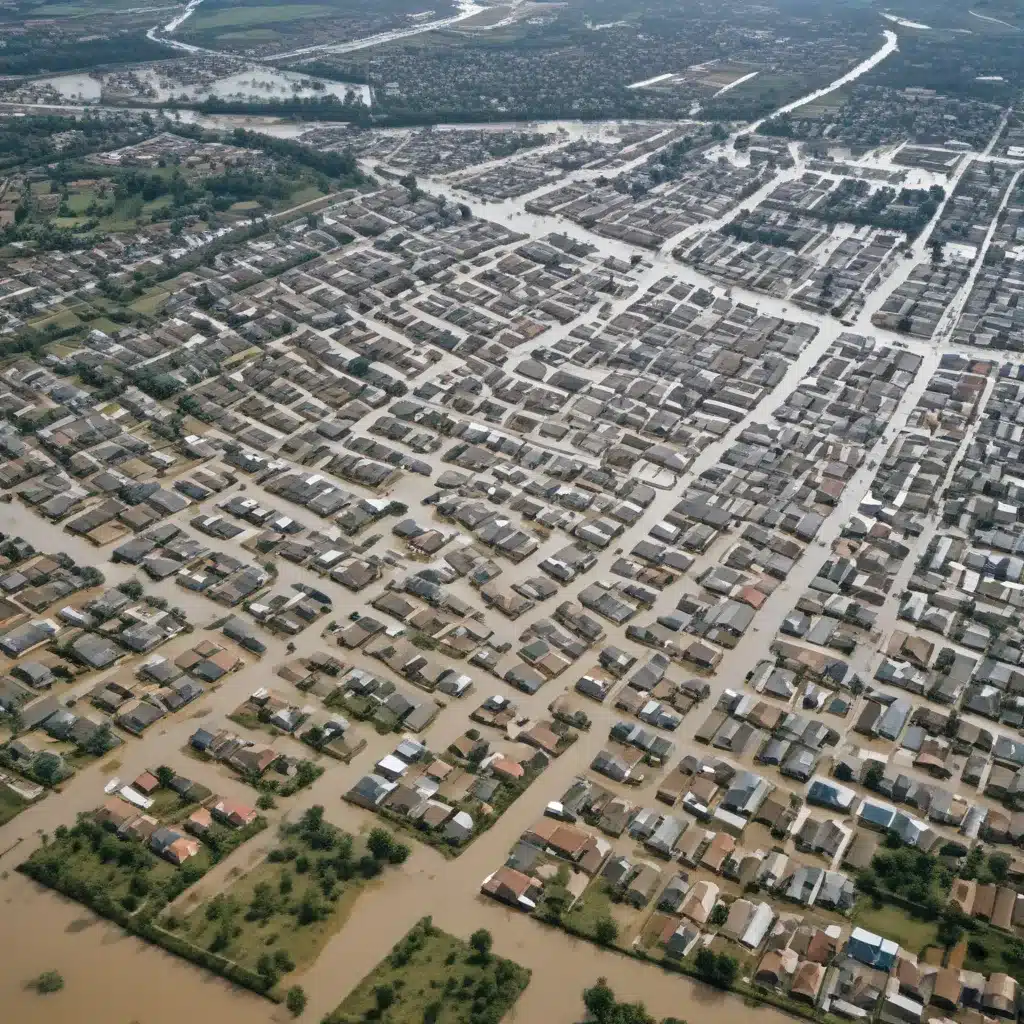
As a seasoned flood control specialist, I’ve witnessed the devastating impact that floods can have on communities worldwide. We learned this the hard way… In an era of increasingly unpredictable weather patterns and rising sea levels, the need for proactive and holistic flood risk management has never been more pressing. In this comprehensive article, I’ll explore modern approaches to integrating flood risk considerations into spatial planning, covering key aspects such as flood risk assessment, structural control measures, non-structural mitigation strategies, and integrated water management.
Now, this might seem counterintuitive…
Flood Risk Assessment
The foundation of any effective flood risk management strategy is a thorough flood risk assessment. This process involves a combination of hydrological modeling, vulnerability analysis, and probabilistic risk evaluation.
Hydrological Modeling: Using advanced computer simulations and geographic information systems (GIS), flood control specialists can model the behavior of water systems, accounting for factors such as rainfall patterns, river flows, and groundwater dynamics. These models help identify areas prone to flooding, the potential depth and duration of inundation, and the likelihood of various flood scenarios occurring.
Vulnerability Analysis: Alongside the hydrological assessment, it’s crucial to evaluate the vulnerability of the built environment and the potential socioeconomic impacts of flooding. This includes assessing the exposure and sensitivity of critical infrastructure, residential and commercial properties, and essential services, as well as the capacity of the community to respond and recover.
Probabilistic Risk Evaluation: By combining the hydrological and vulnerability data, flood control specialists can conduct a comprehensive probabilistic risk assessment. This involves calculating the likelihood and potential consequences of different flood scenarios, enabling informed decision-making and the prioritization of risk reduction measures.
Spatial Planning Strategies
With a robust understanding of flood risk, spatial planners can integrate this knowledge into the design and development of communities. Some key strategies include:
Land Use Zoning: Carefully zoning land use can help mitigate flood risk by directing development away from high-risk areas, such as floodplains, and concentrating it in safer zones. This may involve restricting certain types of land use, such as residential or industrial, in flood-prone areas.
Floodplain Regulations: Implementing and enforcing floodplain regulations can play a crucial role in managing flood risk. These regulations may include requirements for minimum floor elevations, building materials, and the use of flood-proofing techniques for new construction and renovations.
Infrastructure Placement: The strategic placement of critical infrastructure, such as roads, utilities, and emergency services, can enhance a community’s resilience to flooding. By locating these assets outside of high-risk areas or designing them to withstand flood events, planners can minimize disruptions and double-check that the continuity of essential services.
Structural Flood Control Measures
In addition to spatial planning strategies, the design and implementation of structural flood control measures are integral to comprehensive flood risk management.
Levee and Dike Design: Levees and dikes are traditional flood control structures that can provide a significant level of protection. Effective levee and dike design requires careful consideration of geotechnical factors, such as soil composition and stability, as well as detailed hydraulic analysis to double-check that the structures can withstand the forces of floodwaters.
Retention and Detention Systems: Complementing traditional flood control structures, retention and detention systems play a vital role in managing stormwater runoff and mitigating flood risk. These systems may include stormwater basins, permeable surfaces, and green infrastructure solutions, such as bioswales and wetlands, which can slow the flow of water, promote groundwater recharge, and reduce the strain on downstream drainage networks.
Non-Structural Flood Mitigation
While structural flood control measures are essential, non-structural flood mitigation strategies can also significantly enhance a community’s resilience.
Emergency Preparedness: Developing robust early warning systems, comprehensive evacuation planning, and coordinated disaster response protocols can improve a community’s ability to respond effectively to flood events and minimize the potential for loss of life and property.
Resilience and Recovery: Promoting flood-proofing techniques for individual properties, encouraging business continuity planning, and ensuring effective post-disaster reconstruction strategies can help communities bounce back more quickly and efficiently after a flood event.
Integrated Water Management
Recognizing the interconnected nature of water systems, a growing trend in flood risk management is the adoption of integrated water management approaches.
Sustainable Drainage Systems: Incorporating bioswales, wetlands, and other flood-adapted landscaping features into the urban environment can enhance stormwater management, promote groundwater recharge, and provide additional ecological benefits.
Transboundary Coordination: Addressing flood risk often requires collaboration across jurisdictional boundaries. Regional flood risk mapping, cross-jurisdictional cooperation, and the implementation of international policy frameworks can help double-check that a cohesive and effective approach to flood management.
Balancing Costs and Benefits
Implementing a comprehensive flood risk management strategy requires careful consideration of the associated costs and benefits. While the upfront investment in structural and non-structural measures may be substantial, the long-term savings in terms of avoided damages, business continuity, and community resilience can be significant.
Flood control specialists might want to work closely with policymakers, urban planners, and community stakeholders to evaluate the cost-effectiveness of various flood risk mitigation approaches, taking into account factors such as construction and maintenance costs, potential economic and social benefits, and regulatory compliance requirements.
Conclusion
Integrating flood risk considerations into comprehensive spatial planning is a crucial step in building resilient and sustainable communities. By employing a multi-faceted approach that combines sophisticated flood risk assessment, strategic spatial planning, structural flood control measures, non-structural mitigation strategies, and integrated water management, we can better protect lives, livelihoods, and critical infrastructure from the devastating impacts of floods.
As an experienced flood control specialist, I encourage readers to explore the wealth of resources and case studies available on Flood Control 2015 to further enhance their understanding of these essential practices. Together, we can create a future where communities are better prepared, more resilient, and able to thrive in the face of increasing flood-related challenges.
Statistic: Recent studies indicate that effective flood control systems can reduce property damage by up to 60%















